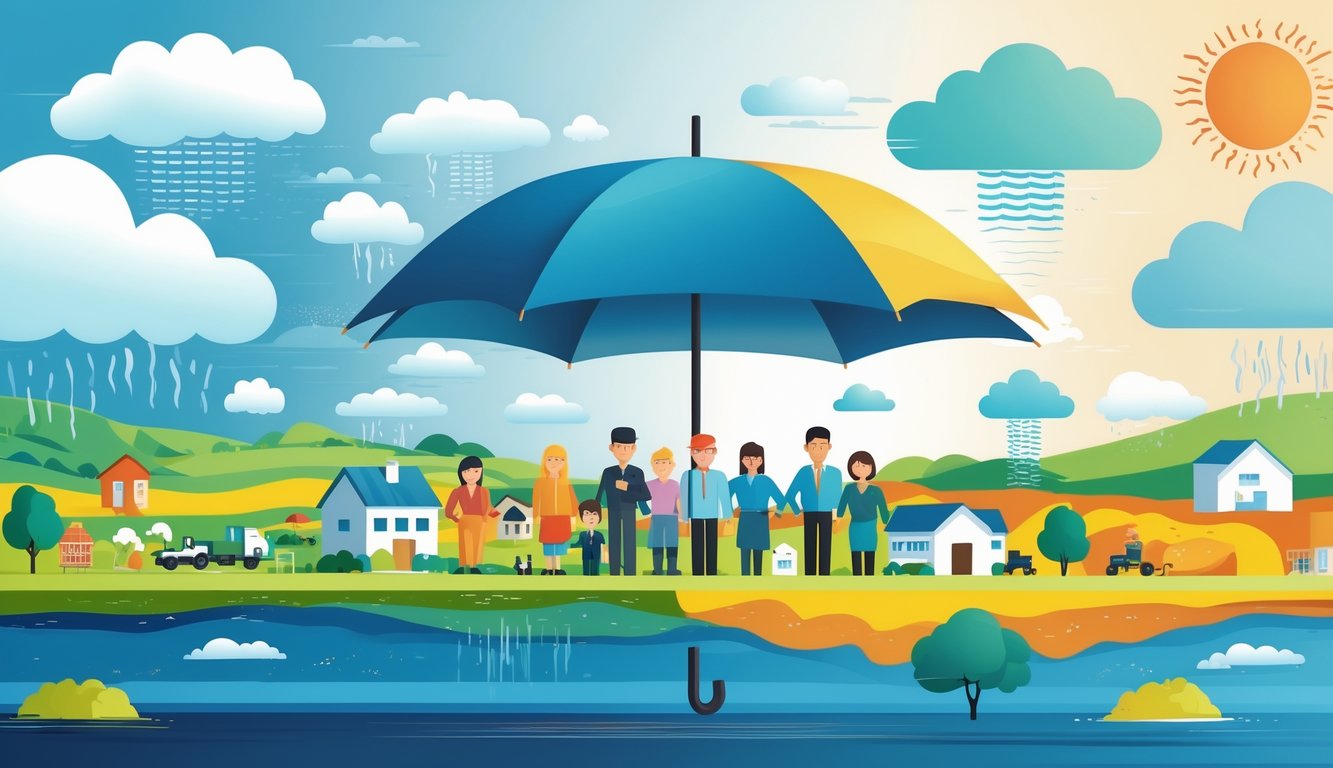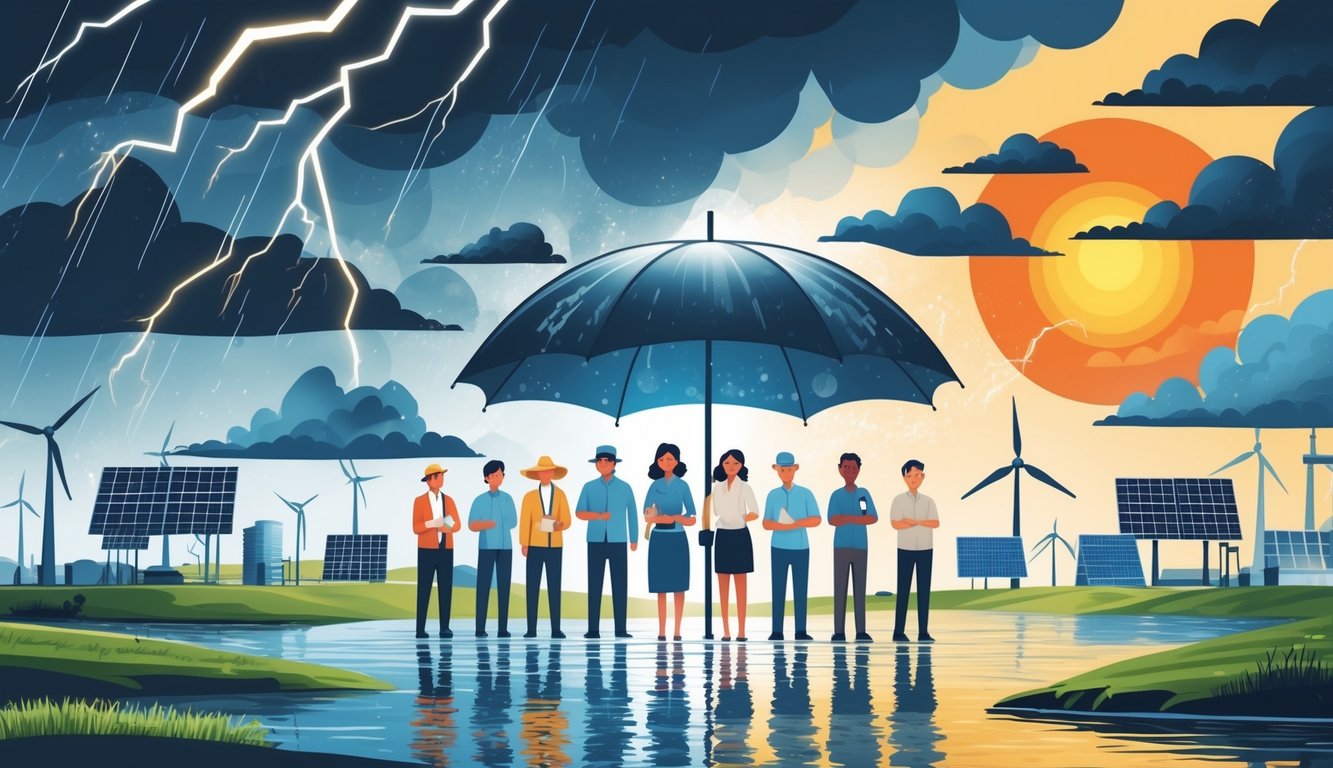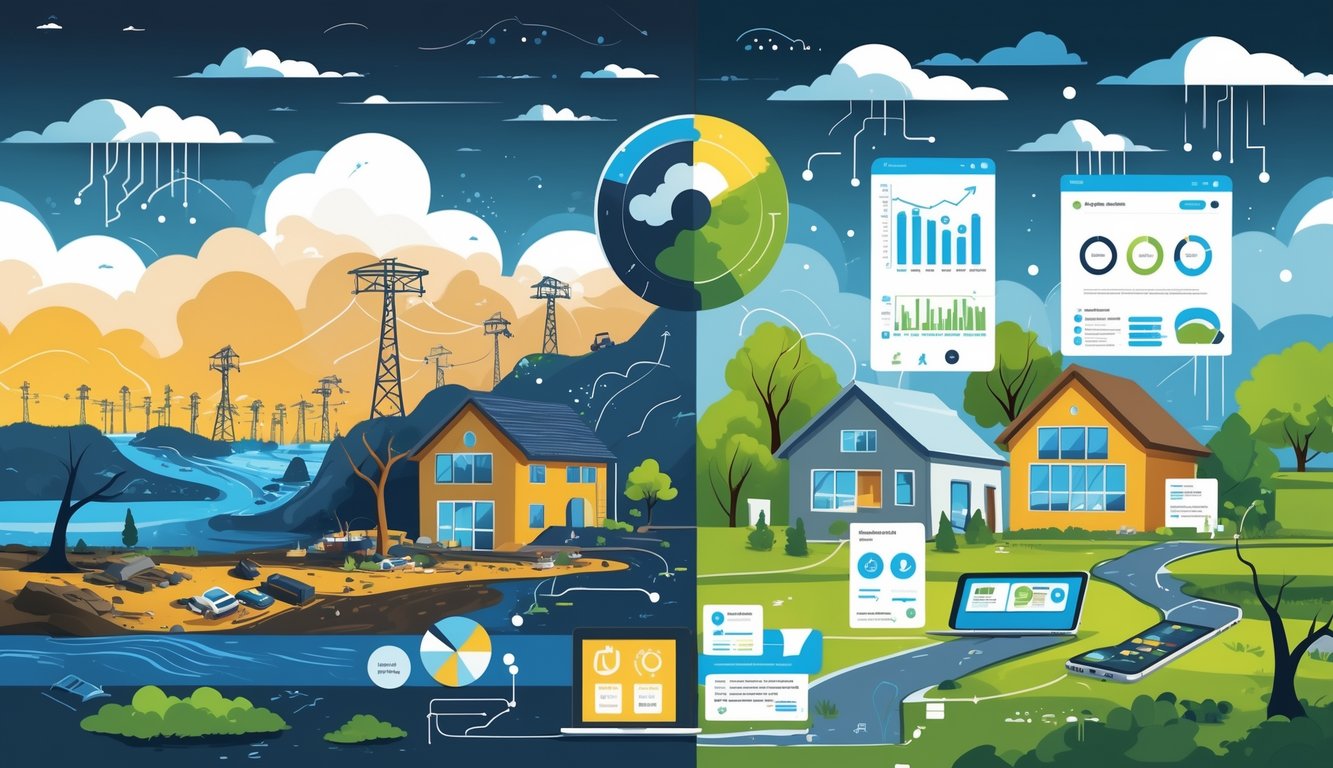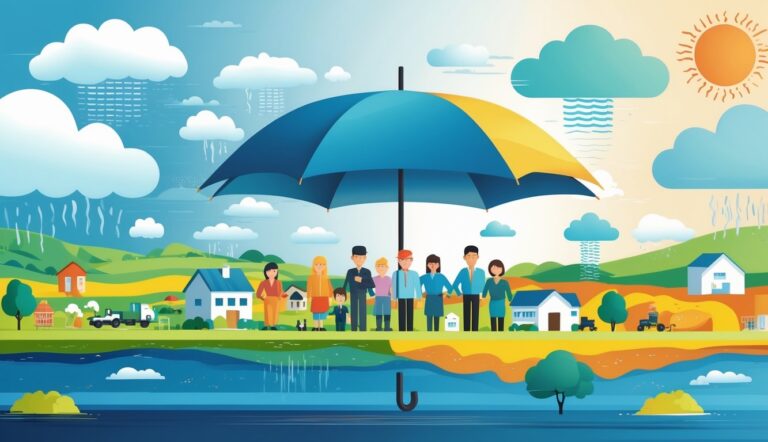Climate risk insurance helps protect your property and investments from damage caused by extreme weather and other climate-related events. It gives you financial coverage for losses linked to floods, wildfires, storms, and other risks that are getting more frequent and intense because of climate change.

Finding and affording this insurance is getting tougher, especially in high-risk areas.
Insurers are struggling to manage and price these risks, so you might need to look for new ways to lower your risk, like making your property more resilient or rethinking where you buy or build.
If you understand how climate risk insurance works, what challenges it faces, and what solutions are out there, you’ll make better decisions for your home or business.
Knowing this stuff really matters as climate change shakes up insurance markets and real estate risk.
Key Takeaways
- Climate risk insurance pays for losses from extreme weather and climate events.
- Insurance can get pricey and hard to find in areas with high climate risks.
- Improving resilience and risk management can help keep insurance options on the table.
Understanding Climate Risk Insurance

Climate risk insurance protects your home and property from damage caused by changing weather patterns and extreme events.
This insurance covers things like floods, wildfires, hurricanes, and other disasters tied to climate.
If you know how climate change affects insurance, what coverage you can get, and what drives up costs, you’ll have a better shot at choosing the right protection.
How Climate Change Impacts Insurance
Climate change brings more frequent and severe extreme weather events, like floods, wildfires, and hurricanes.
Insurance companies get hit with bigger and more frequent claims.
Some insurers stop offering coverage in high-risk areas or raise premiums.
You might notice your insurance costs climbing faster than inflation, especially if storms or heatwaves often hit your community.
Insurers try to balance these risks by tweaking their pricing and policies, but that can mean fewer coverage options in some places.
It’s just getting harder for homeowners to find affordable insurance.
You’ll see higher claimed damages and more nonrenewals in high-risk ZIP codes.
That’s a sign of the growing challenge for the insurance industry.
Types of Climate-Related Coverage
Your insurance might offer a few types of climate-related protection:
- Flood Insurance: Pays for damage from rising water, flooding rivers, or storm surges, which usually aren’t covered by standard homeowner policies.
- Wildfire Insurance: Covers fire damage, especially if you live somewhere dry.
- Windstorm or Hurricane Coverage: Pays for wind damage during storms or hurricanes.
- Subsidence and Earth Movement: Sometimes covers shifting land from drought or heavy rain.
Depending on your location, you might need special policies or add-ons for these risks.
Standard policies often skip certain climate-related events, so you really need to check your coverage to avoid surprises.
Extreme Weather and Insurance Costs
Extreme weather pushes insurance costs higher.
Homeowners in vulnerable spots pay way more in premiums.
For example, people in the riskiest ZIP codes pay about 82% more than those in safer areas.
Insurance companies see bigger claims, sometimes averaging $24,000 per claim in high-risk places.
That bumps up losses for insurers, so they raise prices or cancel policies where losses get too high.
You might face higher nonrenewal rates in your neighborhood, with your insurer deciding not to renew your policy.
That leaves folks scrambling for more expensive or limited coverage, or sometimes losing insurance altogether.
It’s a real headache tied to climate risk and wild weather.
If you want more details, check out homeowners insurance in an era of climate change.
Challenges and Solutions in Climate Risk Insurance

You’re up against rising challenges in climate risk insurance.
There’s tough risk analysis, soaring costs, and a stronger need for adaptation.
Managing these issues means insurers need new risk models, the market has to change, and regulators and builders must rethink their approach.
Risk Assessment and Modelling Innovations
Accurate risk assessment matters a lot for climate risk insurance.
Insurers and actuaries now use advanced forecasting tools to predict flood risk, hailstorms, and wildfires, like the ones in Los Angeles.
These models spot the riskiest areas and help insurers adjust coverage.
Insurers, including big names like Allianz, use this data-driven approach to fine-tune their risk management.
Policies in high-risk zones change based on this science.
Insurers now use environmental data, city development patterns, and climate projections.
This helps them price policies more fairly and push for safer building and land use.
Rising Insurance Costs and Market Shifts
Insurance costs keep climbing as climate threats grow.
If you live in flood-prone or wildfire areas, getting coverage can get tricky or expensive.
For buyers, this means you might need to rethink where you live or invest.
Insurance markets are pulling out of the riskiest zones, so homeowners and developers have fewer choices.
Experts warn that premiums will keep rising unless people work harder to reduce risk.
Some places now have higher deductibles or flat-out exclude certain climate risks.
You might need to upgrade your property or make it tougher to lower your premiums and keep your coverage.
Adaptation, Resilience, and Regulatory Actions
Regulators and lawmakers are rolling out stricter building codes and offering perks for climate-resilient construction.
You could get tax breaks or help for using sustainable materials like mass timber or low-carbon concrete.
Projects like floodplain realignment or green stormwater systems can make cities more resilient and cut down on insurance claims.
Cities that invest in this stuff help keep insurance markets steady.
Governments are thinking about backstopping insurance programs to keep coverage available even as risks rise.
Some US states already do this after disasters like the Los Angeles wildfires.
If you follow these new rules and build with resilience in mind, you’ll protect your assets and make insurance more affordable and accessible.
Frequently Asked Questions

If you understand how climate risk insurance works, you can better protect your property or business.
It covers damage from wildfires, floods, and storms, which are all getting more common because of climate change.
How does climate risk insurance help in mitigating the impact of climate change?
Climate risk insurance gives you financial support to recover after extreme weather hits.
It helps you rebuild after floods, fires, or storms.
Insurance can also motivate you and your neighbors to invest in safety upgrades, like fire-resistant materials or flood barriers, which lowers future risks.
What are the primary types of climate risk coverage offered by insurance companies?
Most policies cover property damage from things like wildfires, floods, and hurricanes.
Some policies also pay for business interruptions caused by climate events.
You might find specialized coverage too, like crop insurance for farmers dealing with drought or insurance for coastal properties facing rising sea levels.
In what ways has the increasing prevalence of climate change affected the insurance industry?
Insurance costs keep going up because disasters are happening more often and hitting harder.
In some high-risk spots, insurers have just stopped offering coverage, which makes it tough to find insurance.
Premiums have shot up in places like California and Florida due to wildfires and hurricanes.
Sometimes, homeowners see their costs double or even triple.
How do banks integrate climate risk considerations into their policies?
Banks now use climate risk data to decide where they’ll lend.
If you’re in a high-risk area, getting a mortgage can be tougher because the risk of damage is higher.
Loan approvals often depend on whether you can get insurance and how resilient your property is, since that affects the long-term value.
What are the key strategies for developing a robust climate risk plan for businesses?
Businesses should figure out their exposure to climate hazards and invest in protective measures, like strengthening buildings or making supply chains more secure.
You’ll want to work with your insurer to understand your coverage limits, and maybe look into risk transfer options like catastrophe bonds or pooled insurance.
What career opportunities are emerging in the field of climate risk insurance?
Jobs keep popping up in risk assessment, climate modeling, underwriting, and policy development, all centered around climate-related hazards.
You’ll also spot roles in community resilience planning and insurance product innovation.
Some folks focus on regulatory compliance to help tackle climate challenges.






